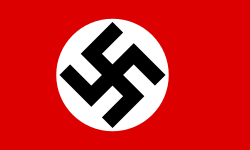National and state flag
| State Flag | Date | Use | Description |
|---|---|---|---|
 | 1230–1806 1918–1934 1945–present | National flag and civil ensign | The flag of Austria consists of three equal, horizontal bands of red, white and red. |
 | 1955–present | State flag, war flag and naval ensign | Consists of three equal, horizontal bands of red, white and red, surmounted with Austria's coat of arms. |
 | 1945–present | Flag of Austria (vertical). | Same as the national and civil flag but vertical; the Austrian flag also consists of 3 equal, vertical bands of red, white and red. |





























































































